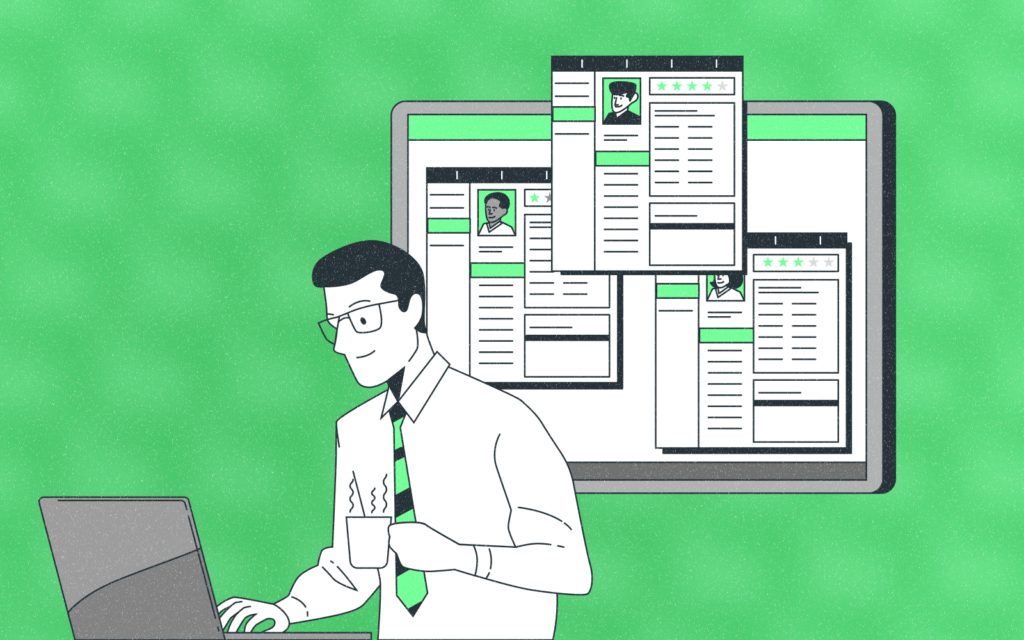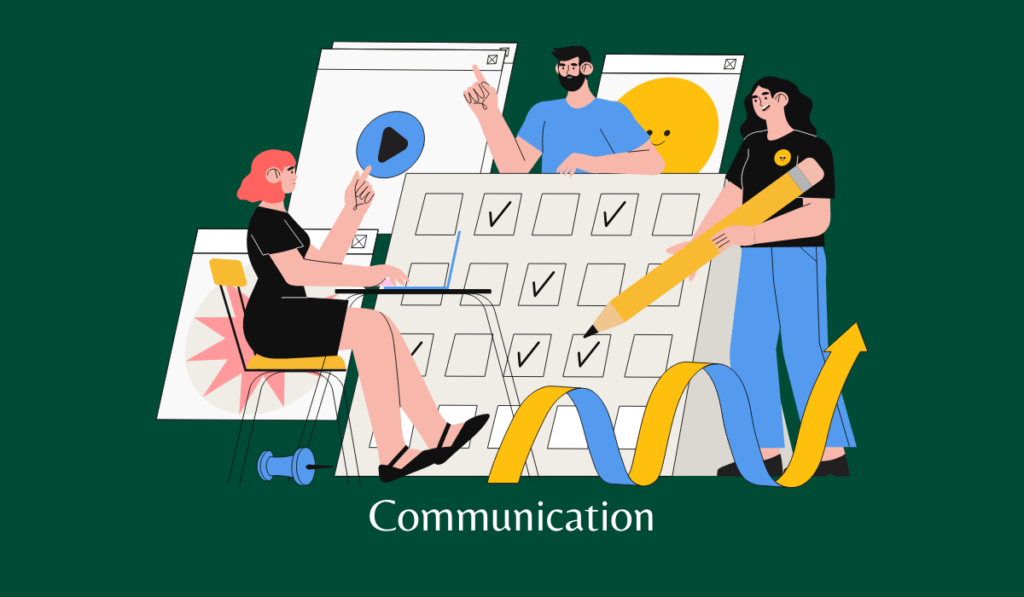Employee Management: How to Run It for Business Effectiveness


Most business owners want to see their business run as efficiently as possible. Best in employee management definitely could boost the business performance.
This means managing employees in the right job positions, maximizing productivity, and filling vacant positions with great candidates.
This blog post will discuss managing people to get the most out of your team.
We’ll also provide tips for finding qualified candidates to fill any open positions in your company.
Let’s get started!
The importance of employee management

Employee management is the process of hiring, training, managing, and evaluating the performance of employees.
An effective employee management system can help businesses manage their employees effectively and improve productivity and profitability.
It can also help create a positive work environment and reduce staff turnover. Employee management is vital for a variety of reasons.
Firstly, it helps to ensure that employees are productive and efficient.
Secondly, it helps to manage employee morale and motivation.
Finally, it helps to manage employee absences and tardiness.
By effectively managing employees, businesses can improve their bottom line and create a more positive work environment.
In addition, employee management can help businesses comply with employment law and avoid potential litigation. Consequently, employee management is an essential part of running a successful business.
By taking the time to manage their employees effectively, businesses can reap many benefits that will help them achieve their goals.
Define the roles and responsibilities of each employee

Effective employee management is critical to the success of any organization.
In order to ensure that employees are meeting the organization’s expectations, it is crucial to define each employee’s roles and responsibilities clearly.
If you want your employees to be accountable for their performance and aware of their expectations, you need to tell them what these are.
Additionally, defining roles and responsibilities can help to foster a sense of ownership and accountability among employees.
When employees feel like they are a part of something larger and that their work is essential, they are more likely to be engaged and motivated.
Furthermore, each employee must be allowed to contribute their unique skills and knowledge to the team.
Effective employee management also includes providing regular positive and negative feedback to help employees improve their performance.
Finally, employees must create a healthy work-life balance to prevent burnout and promote long-term motivation.
Ultimately, defining roles and responsibilities is an investment in the organization’s future success.
Set clear expectations for each role.
Every employee has different strengths, weaknesses, and levels of experience.
As a result, it is crucial to set clear expectations for each employee’s role to ensure they can contribute effectively to the company.
By setting explicit expectations and holding employees accountable for meeting them, you can help ensure everyone is working to their full potential.
Furthermore, it allows you to gauge whether or not an employee is effectively performing their role.
If an employee consistently fails to meet your expectations, you may need to reconsider their placement on your team.
However, if an employee exceeds your expectations, you may want to give them additional responsibilities.
Either way, keeping track of each employee’s performance and adjusting accordingly is essential. In addition, this will also help to prevent employee frustration and turnover.
While establishing these systems may take some time, the long-term benefits will make it well worth the effort.
Encourage employees to take ownership.

One of the most critical aspects of company culture is encouraging employees to take ownership of their work.
This means that employees feel empowered to find solutions to problems and are proactive in their everyday tasks.
There are several ways to encourage this type of behavior.
First, company leaders should set the tone by being open to new ideas and taking action on feedback.
Second, employees should be allowed to work on projects that are meaningful to them.
Finally, company policies should encourage risk-taking and innovation.
Additionally, it fosters a sense of teamwork and camaraderie, as employees work together towards a common goal.
In order to create this kind of company culture, it is essential to give employees the freedom to experiment and take risks.
It is essential to provide plenty of opportunities for feedback so that employees can learn from their mistakes.
By creating an environment where employees feel empowered to take ownership of their work, companies can foster a culture of innovation and creativity.
Celebrate successes and failures as a team

It is essential to celebrate successes together and learn from failures as a team.
This allows performance to be monitored and managed effectively and fosters a sense of camaraderie and ownership within the team.
By sharing in both the successes and failures of the team, each member will feel more invested in the group’s overall performance.
Furthermore, by learning from failures, the team will be able to avoid making the same mistakes in the future. In order to achieve these goals, it is important to set aside time regularly to reflect on both the successes and failures of the team.
The team conversations can be informal or more formal debriefings. Either way, everyone on the team must have a chance to share their thoughts and feelings.
Keep communication open and consistent

In order to maintain a high level of employee productivity, it is essential to keep communication open and consistent.
This means establishing regular communication channels and ensuring that everyone has access to their information.
It also means being responsive to employee queries and concerns promptly.
By doing this, you will create a sense of trust and transparency between the employee and management. This, in turn, will lead to a more productive working relationship.
Foster a positive work environment
A positive work environment is a key to maintaining employee productivity.
In order for employees to be productive, they need to feel comfortable and happy at work.
This means creating a workplace that is supportive and encouraging. It also means establishing rules and standards that are fair and reasonable.
Finally, it means being respectful of employee time and personal space. By doing all of these things, you will create a positive work environment that will encourage employee productivity.
Manage employee performance effectively

In order to maintain a high level of employee productivity, it is important to manage employee performance effectively.
This means setting clear expectations and standards and measuring employee performance against those expectations.
It also means taking action when employees fall short of the expected standard.
Get more out of your business
Get the best employee engagement content every week via mailing list
Regularly communicate with employees about their progress and performance

“85% of employees said they’re most motivated when management offers regular updates on company news” Trade Press Service.
Employees who feel valued and respected are more likely to be productive, creative, and committed to their work.
One way to foster employee engagement is to regularly communicate with employees about their progress and provide feedback on their performance.
This helps employees feel like they are part of a team and that their work is valued.
It also allows for a two-way flow of information so that employees can give feedback about their work experiences and needs.
Furthermore, regular feedback provides an opportunity for employees to course-correct and address any areas of improvement.
Regular communication can help to create a supportive and productive workplace.
The best way to manage employees

Managing a team of employees can be a daunting task, but proper employee management is essential for any business to run smoothly.
The first step is to define roles and responsibilities clearly. Each employee should know what is expected of them, and they should be held accountable for meeting those expectations.
Furthermore, it is important to provide employees with the resources to do their job effectively.
This might include training, access to necessary tools and equipment, or a comfortable work environment.
Finally, regular communication is key to maintaining a productive and positive work environment.
Employees should feel like their voices are being heard, and they should be allowed to provide feedback.
By following these simple guidelines, businesses can ensure that their employees are appropriately managed and that their needs are being met.
This, in turn, will lead to increased productivity and a more successful business.
The types of employee management systems
There are three types of employee management systems:
1) Employee monitoring
2) Employee retention
3) Employee motivation
Employee monitoring
Employee monitoring is the process of tracking employee performance data to make improvements.
This can include tracking employee productivity, time spent on specific tasks, or quality of work. Employee monitoring can help you identify areas where employees need more training or where you may need to adjust your employee policies.
Employee retention
Employee retention keeps your best employees by creating a positive work environment and offering competitive benefits.
Improving employee retention includes offering flexible work arrangements, training and development opportunities, and competitive compensation and benefits.
Employee retention can help you reduce employee turnover, which can be costly and disruptive to your business.
Employee motivation
Employee motivation is the process of inspiring employees to do their best work.
Some ways to motivate employees include offering recognition and rewards, providing clear goals and expectations, and creating a positive work environment. Employee motivation can help improve employee productivity and morale.
Implementation of an employee management system in your business

There are a few fundamentals you should keep in mind to ensure maximum effectiveness in employee management.
The first is that employee management should be a top priority for your business.
This means that you should ensure that you have the proper systems to manage your employees effectively.
Communication
Make sure that you are communicating with your employees regularly and effectively.
This will help ensure that everyone is on the same page and clear all expectations.
Employee management requires consistency
Ensure that you apply the same standards to all of your employees and not play favorites.
This will help to ensure that everyone is treated fairly and that the best employees are rewarded.
Tips employee management
1. Make employee management a priority
When it comes to employee management, it’s crucial to make it a priority in your business.
This means ensuring that you have the correct systems in place and that all employees are familiar with them.
It also means taking employee management seriously and not letting things slip through the cracks.
2. Communicate effectively
Good communication is key to effective employee management.
This means communicating with employees regularly and making sure that all communications are clear and concise.
It’s also essential to respond to employee inquiries and concerns and promptly address any issues.
Reward employees for a job well done

A well-run performance management system is critical to the success of any organization.
By setting clear expectations and providing regular feedback, performance management helps employees stay on track and improve their work.
But performance management is not just about criticism; it’s also about recognizing and rewarding employees for a job well done.
When employees are recognized for their achievements, they feel appreciated and motivated to do their best work.
As a result, organizations that reward employees for a job well done tend to be more successful and productive.
So if you want to get the most out of your employees, make sure you have a good performance management system in place – and don’t forget to reward your top performers!
Employers can send a clear message that they value high performance and are willing to invest in their employees by offering rewards for a job well done.
In addition, recognition programs can help to build team morale and improve communication between managers and employees.
When used effectively, rewards and recognition can be powerful tools for driving employee performance.
Address issues or problems as they arise

In today’s business climate, it is more important than ever to address issues or problems as they arise.
With the vast array of performance monitoring tools available, businesses have the ability to constantly monitor their performance and make adjustments as needed.
By addressing problems early, businesses can avoid potential disruptions to their operations and maintain a high level of performance.
Additionally, addressing problems promptly also allows businesses to identify trends and implement preventive measures to avoid future problems.
By taking a proactive approach to problem-solving, businesses can improve their overall performance and avoid potential disruptions.
The Challenges in employee management

Employee management can be a challenge for any business owner or manager.
Employees are human beings with their own individual needs and goals. As such, they will inevitably go through stages of development in their careers.
It is the job of the manager to ensure that employees are effectively supported throughout these stages.
Additionally, employees will occasionally experience personal problems that can affect their work performance.
Not only do you need to keep track of employees’ work hours and performance, but you also need to provide opportunities for employees to develop their skills.
In addition, you need to maintain a respectful and positive relationship with employees in order to create a productive work environment.
All of these factors can be difficult to balance, but they are essential for managing a successful business.
As a manager, it is important to be aware of these challenges and to have strategies in place to address them.
With proper employee management, businesses can thrive and reach their full potential.
Five-time management technique

There are five primary time management techniques that can be used to help improve employee productivity in a business. They are as follows:
1. Establishing Goals
Employees need to have specific and measurable goals in order to stay focused and on track. Without goals, employees can easily become distracted and lose focus.
2. Break Tasks Down
When tasks seem too daunting, employees are more likely to procrastinate or become overwhelmed.
By breaking down large tasks into smaller chunks, employees can better manage their time and complete them more efficiently.
3. Establishing Deadlines
When employees know that they have a specific deadline for completing a task, it can help to motivate them and keep them on track.
By establishing deadlines, businesses can ensure that tasks are completed in a timely manner.
4. Setting Priorities
In order to be effective, employees need to know what their priorities are. By setting priorities, employees can focus on the tasks that are most important and get them done more quickly.
5. Tracking Time Spent on Tasks
By tracking the amount of time that employees are spending on specific tasks, businesses can get a better idea of how much time is being wasted and where improvements can be made.
Implementing these five techniques should help to improve employee productivity in a business and allow it to run more efficiently.
What percentage of time should a manager spend managing staff
A motivated employee is productive, efficient, and committed to their work.
They are also more likely to be engaged with their co-workers and contribute to a positive team dynamic.
For these reasons, it’s important for managers to spend time managing staff.
However, the amount of time that a manager should spend managing staff will vary depending on the size of the team and the specific needs of each employee.
In general, a manager should spend at least 50% of their time managing staff. This ensures that employees feel supported and motivated and that they have the opportunity to voice any concerns or ask for help when needed.
By spending enough time managing staff, a manager can create a productive and positive work environment.
Manage employees and build a strong team
In any business, effective management of employees is essential to building a strong team.
There are a few key things that you can do to manage employees effectively and build a strong team.
First, it is important to communicate clearly and often with your team. This will help to ensure that everyone is on the same page and knows what is expected of them.
Setting clear expectations, providing adequate resources, and offering regular feedback are all essential ingredients in keeping your team on track.
When employees feel like they are valued and supported, they are more likely to be productive and engaged in their work.
Additionally, it is important to provide employees with adequate training and resources. This will allow them to do their jobs properly and feel confident in their abilities.
Finally, it is also crucial to show appreciation for your employees’ hard work and achievements. This will help to motivate them and create a positive work environment.
By following these tips, you can manage employees effectively and build a strong team.
Conclusion
In order to manage employees effectively, it is important to have a clear understanding of what you expect from them and how they can help your business achieve its goals.
By creating a system where employees know their responsibilities and are held accountable for meeting deadlines and producing quality work, you can create an environment that is both productive and satisfying for everyone involved.
By using the tips in this blog post, you can create an employee management system that works for your company and helps you reach your goals.


